Across the USA 2013 #6 (Espar)
After a quick stop at Ken-Tool, we headed northeast to Canada. Despite our fears of long lines and secondary inspections, there was no waiting and Canadian Customs simply asked us if we had any firearms or explosives, and then waved us through.
In the morning, the Customer Service people and Technicians were waiting for us at the Espar North American Headquarters in Mississauga, Ontario. Our Espar diesel-powered heaters are an extremely important element to our comfort on the road. The Airtronic Air Heater is the primary heater for the camper itself. The Espar D5 Hydronic heats coolant from the engine to 187°F. Using a system of valves, we can direct that heated coolant to our FlatPlate hot water heater, or to preheat the engine on a cold morning, or to the camper itself should the Airtronic fail, or even to all three at the same time if needed. Both heaters use diesel from the main tank and both have been extremely reliable over the last 10 years.
We had come to Espar for two reasons. First, we wanted to have the heaters checked and analyzed by the Espar technicians with their computers to make sure everything was working correctly. Secondly, since these heaters are often used in sailboats/yachts at sea level, we had never installed a high-altitude kit that adjusts their fuel for the thinner air.
This would’ve normally required the installation of the second high-altitude fuel pump on each heater, but as luck would have it, Espar engineers have developed a new and more efficient method to deal with altitude. A small black box was installed on each heater that actually measures air pressure, which is directly related to altitude, to adjust the fuel pump automatically. With parts at their fingertips, the glow plug and atomization screen on the Airtronic was changed.
The new air pressure sensors have been tested to 10,000 feet, so we will let you know when we get to the 16,000-foot elevation along the Walkhan Corridor. If all else fails, we can always just leave the engine running as we did in Siberia, letting our third back-up Hunter radiator in the camper keep things toasty.
- The Airtronic Air Heater is a primary heater for the camper itself.
- The D5 Hydronic heats coolant which is directed through a series of valves to the engine, the FlatPlate heater, or the Hunter radiator in the camper.
- Based on years of experience, we placed all the controls for heaters, the rooftop Golite and music right next to our bed.
- Espar technician, Jeffrey Amours, knew every detail of our heaters.
- Our Espar Airtronic main camper heater was installed so that it can easily be serviced when a glow plug or other parts need to be changed.
- With parts at their fingertips, the glow plug and atomization screen on the Airtronic were changed.
- A small black box was installed on each heater that actually measures air pressure, which is directly related to altitude, and adjusts the fuel pump automatically.
- Both our Espar heaters will be extremely important during our travels along the Silk Road.
- Espar’s mascot Bertrand will be traveling with us.
- The Espar team, (L to R) Alexey Konyshev, Jeffrey Amores and John Giglio (far R) were all extremely knowlegible and helpful.
- On our way south, we snapped this photo of Niagara Falls as we crossed the Rainbow Bridge.



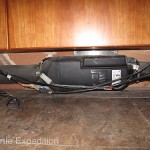
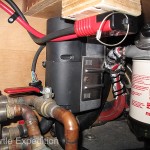
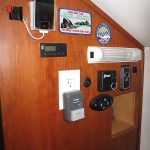
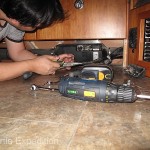
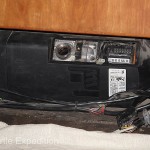
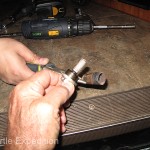
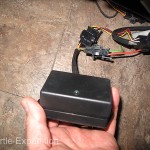
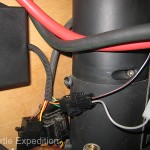
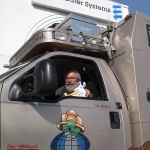

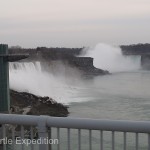





Hey, how did it do over 10k feet?? I regularly camp around 11K, sometimes 12+ in the Sierra’s. This will impact my decision on whether or not to buy, please let me know! Thanks so much for the info!